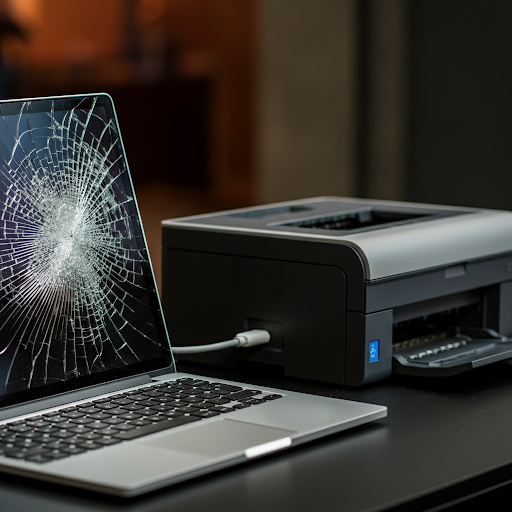Snapdragon and Scan to Email Challenges
The purchase of a new printer can be both an exciting and challenging prospect. As technology is changing rapidly, there are things you need to know that are not common knowledge. Printer compatibility with modern computers is no longer just ‘plug and play’.
Computers are not all the same.
Traditionally, computers run an Intel or AMD chip. Intel or AMD chips run an ‘x86 architecture’, which indicates the language or instruction set that the computer understands. Now we are seeing the new Snapdragon chip on the market, which uses an ‘ARM architecture’ that requires a different instruction set to run the core of these computers. Do not assume when buying a new computer that it will work with your software, printer or any other peripheral device. If you have a Snapdragon processor in your computer, the chances are you will be having compatibility issues at the time we wrote this article.
Why doesn’t my Snapdragon computer work with my printer?
Printer manufacturers haven't prioritised creating print drivers for Snapdragon processors in computers due to a few key factors:
* Limited demand: Most Snapdragon devices are mobile phones and tablets, where printing is available with basic print capability.
* Architectural differences: Snapdragon uses ARM architecture, while most printers are designed for x86 systems, requiring significant driver redevelopment.
* Resource constraints: Developing and maintaining drivers for a niche market can be costly for manufacturers.
* Workarounds exist: Cloud printing and print servers offer alternative solutions, reducing the urgency for native driver support.
Why does Scan-to-email fail?
Scan-to-email relies on older, less secure protocols to send emails directly. Most email providers prioritise secure connections and authentication methods to combat spam and phishing. As ISPs tighten security, these older methods are often blocked, causing scan-to-email failures.
There are many different ways of connecting your Multifunction Printer to talk to the internet, though it will vary depending on your ISP “Internet Service Provider” or “Cloud Service Provider”.
Option 1: Authenticate your device or application directly with a mailbox, and send mail using SMTP AUTH client submission
Option 2: Send scans directly from your printer or application to Cloud Service (direct send)
Option 3: Configure a connector to send emails using Microsoft 365 or Office 365 (SMTP relay)
Option 4: Use your own email server to send emails from Multifunction devices and applications
We recommend using someone who has the appropriate knowledge to configure these settings.


WE HAVE SERVICED MELBOURNE
SINCE 1997 OVER 25 YEARS



